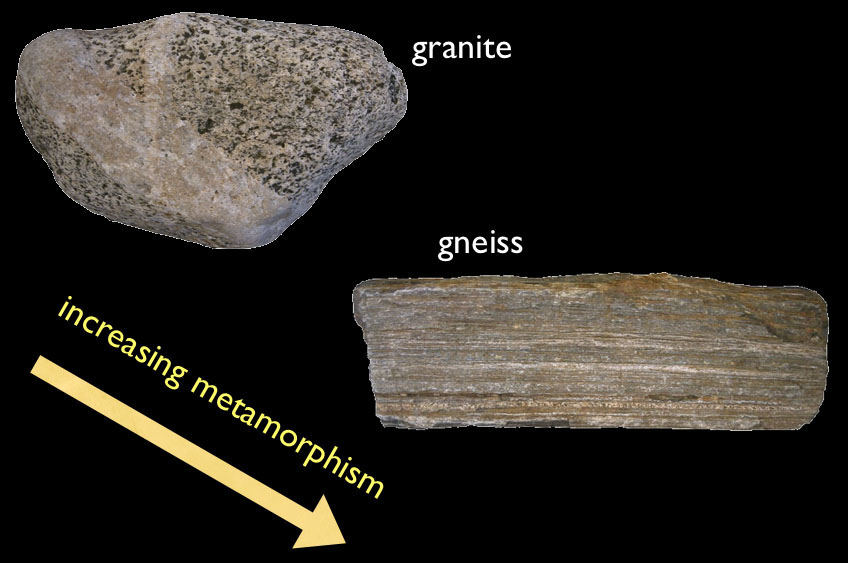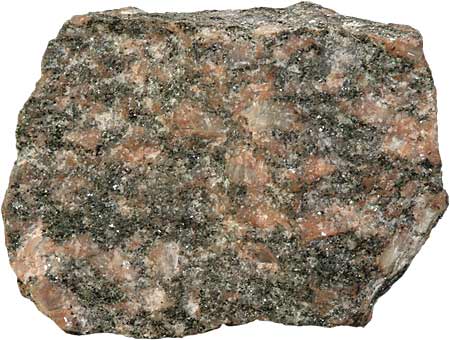Gneiss ˈ n aɪ s is a common and widely distributed type of metamorphic rock gneiss is formed by high temperature and high pressure metamorphic processes acting on formations composed of igneous or sedimentary rocks orthogneiss is gneiss derived from igneous rock such as granite.
In the formation of gneiss from granite t.
Paragneiss is gneiss derived from sedimentary rock such as sandstone.
Both gneiss and granite are made of feldspars quartz mica and smaller amounts of dark colored minerals like hornblende.
Granite is an intrusive igneous rock which is very hard crystalline and is visibly homogeneous in texture and forms by melting of continental rocks gneiss is a high grade metamorphic rock i e.
The mineral composition of both granite and gneiss is same but alteration of granite because of very high pressure and temperature leads to the formation of gneiss.
Gneiss is formed from the high temperature metamorphism of existing igneous rocks generally granite or diorite.
The rocks that form gneiss are exposed to extreme pressures and temperatures of between 600 and 700 degrees celsius.
These temperatures cause the individual minerals to migrate forming distinct bands through the rock.
Granite gneiss can also form through the metamorphism of sedimentary rocks.
Augen gneiss from the german.
Granite is a very hard granular crystalline igneous rock which consists mainly of quartz mica and feldspar and is often used as building stone gneiss is a common and widely distributed type of rock formed by high grade regional metamorphic processes from pre existing formations that were originally either igneous or sedimentary rocks.
Gneiss is a type of metamorphic rock while granite is a type of igneous rock.
Not all gneiss is obtained from granite and there are also diorite gneiss biotite gneiss garnet gneiss and so on.
Gneiss forming from sedimentary rock is called paragneiss and can form from shale sandstone or basalt while gneiss forming from igneous rock is called orthogneiss and typically forms from granite gabbro or diorite.
Formation high temperature and high pressure processes that act on igneous and sedimentary rocks cause the formation of gneiss while the slow crystallization of magma forms granite.
In simplified terms you can think of gneiss as a metamorphic version of granite.








